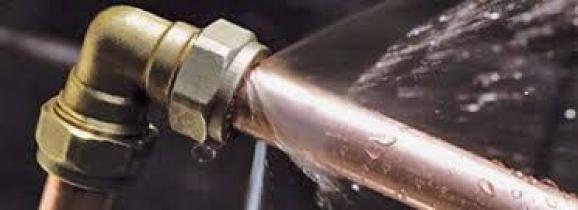Exploring the Top Reasons for Drips in The Home
Exploring the Top Reasons for Drips in The Home
Blog Article
Just about everyone may have his or her own theory involving Top Causes of Home Water Leaks.

Leakages not just trigger waste of water but can additionally create unneeded damage to your home and also promote unwanted organic growth. However, water leakages might go unnoticed because most of the pipework in our house is hidden. By recognizing and also looking for daily scenarios that cause leaks, you can safeguard your house from future leaks and unneeded damage. Today, we will look at 6 leakage creates that may be creating your pipelines to drip.
Instantaneous temperature level adjustments.
Extreme temperature level adjustments in our pipes can trigger them to increase as well as acquire suddenly. This development as well as contraction might cause splits in the pipes, particularly if the temperature level are below freezing. It would be best if you watched on exactly how your plumbing works. The visibility of the previously discussed conditions frequently suggests a high threat.
Corroded water supply
This might be the reason of discoloration or warping on your water pipes. If our plumbing system is old, take into consideration replacing the pipes since they are at a higher threat of rust than the newer designs.
Defective Pipeline Joints
The factor at which your pipes connect is frequently the weakest link in the waterline. Pipe joints can degrade over time, causing water leakages. Regrettably, the majority of pipe joints are not easily visible. If you have loud pipes that make ticking or banging noises, specifically when the hot water is switched on, your pipe joints are most likely under a great deal of pressure. It is recommended to have your plumber inspect your system annually.
Intruding roots
Many water leakages start outside the residence instead than inside it. You might notice damp patches or sinkholes in your backyard, and also that may suggest that tree origins are getting into water lines creating water to permeate out.
Poor Water Connectors
Sometimes, a leak can be caused by loosened hose pipes and pipelines that supply your devices. Usually, shifting is what causes the loosened water Connections. You might discover when it comes to a washing equipment, a tube might spring a leakage due to shaking during the spin cycle. In case of a water links leak, you might see water running straight from the supply line or puddles around your devices.
Clogged Drains
Obstructed drains may be irritating as well as inconveniencing, but they can in some cases end up causing an overflow leading to rupture pipes. Maintain eliminating any type of materials that might go down your drains pipes that might clog them to avoid such aggravations.
All the above are sources of leaks but not all water leaks result from plumbing leakages; some leaks might originate from roof covering leaks. All leaks must be fixed promptly to avoid water damages.
Leaks not just cause waste of water however can additionally create unneeded damages to your house and promote unwanted natural development. By looking as well as understanding for day-to-day scenarios that create leakages, you can protect your home from future leakages and also unnecessary damage. Today, we will look at six leak triggers that might be triggering your pipes to trickle.
At times, a leak can be created by loosened tubes and also pipes that supply your devices. In situation of a water connections leak, you may observe water running directly from the supply line or pools around your devices.
How To Check For Water Leak In Your Home
How To Check for Leaks
The average household's leaks can account for nearly 10,000 gallons of water wasted every year and ten percent of homes have leaks that waste 90 gallons or more per day. Common types of leaks found in the home are worn toilet flappers, dripping faucets, and other leaking valves. These types of leaks are often easy to fix, requiring only a few tools and hardware that can pay for themselves in water savings. Fixing easily corrected household water leaks can save homeowners about 10 percent on their water bills.
To check for leaks in your home, you first need to determine whether you're wasting water and then identify the source of the leak. Here are some tips for finding leaks:
Take a look at your water usage during a colder month, such as January or February. If a family of four exceeds 12,000 gallons per month, there are serious leaks.
Check your water meter before and after a two-hour period when no water is being used. If the meter changes at all, you probably have a leak.
Identify toilet leaks by placing a drop of food coloring in the toilet tank. If any color shows up in the bowl after 10 minutes, you have a leak. (Be sure to flush immediately after the experiment to avoid staining the tank.)
Examine faucet gaskets and pipe fittings for any water on the outside of the pipe to check for surface leaks.
Undetected water leaks can happen without the home or business owner even realizing. If you suspect a water leak, but not able to find the source. It is time to contact a professional water leak detection service, The Leak Doctor.
How To Find a Water Leak In Your Home
https://www.leakdoctor.com/blog/How-To-Check-For-Water-Leak-In-Your-Home_AE197.html

As an enthusiastic reader on Common Water Leaks In House, I assumed sharing that piece of content was smart. Those who appreciated our blog post kindly don't forget to pass it around. Many thanks for your time invested reading it.
Burst pipe? Phone! Report this page